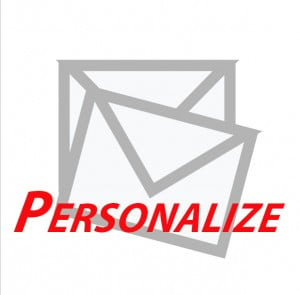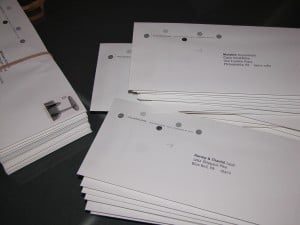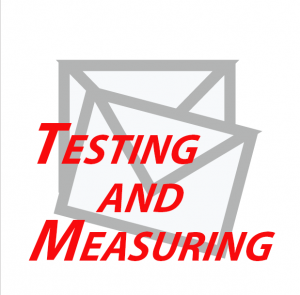This is the second in our four-part series around direct mail for nonprofits. Our last post was on Increasing Donations with Direct Mail Campaigns. In that post we talked about whether direct mail was dead. With response rates at 34 out of 1,000 for direct mail and 1 out of 1,000 for email, we pretty much debunked that myth.
In that earlier post, we also went into several key factors that drive direct mail donations. These include: messages, mailing list, timing, and how to minimize printing costs. We set some expectations around acquiring donors and the likelihood of actually making a profit on your mailing.
If you missed that post, I recommend you take some time to review it. Direct mail is so rich with critical factors and subtle nuances that will all add up to drive your nonprofit's success. Or, they could come together to subtract from your results. It's well worth your time to learn more.
Creating Relationships
So much of nonprofit fundraising is about creating and building relationships, whether that's in person or at a distance. As a nonprofit, you have a mission for good. There are many people who would be delighted to support your mission if only they knew about it — and knew how they could help.
Given that, your efforts need to be on finding those people, telling them about your mission, and building the call to action to motivate them to donate their time, talent, and treasure. That effort should not begin with a greeting to "occupant" or some similar impersonal greeting.
A recent study by the Direct Marketing Association cited that 74% of respondents stated that personalization was important to them. In that same study 31% said that it is important that the letter acknowledges any previous dealings with the organization. You can find some further insight from this study at Infographic: consumers more likely to deal with direct mail immediately compared to email. There's also some great numbers there around shelf life of direct mail (66% keep it), immediate response (79%), and trust (56%).
Provide Personalization that Facilitates Donations
So you've tumbled onto the importance of beginning your donor dialog with the person's name. Next is using that person's address to point out nearby efforts from your organization's programs and how to get involved. This, in essence, brings your message "home" to your prospective donor.
A great source of personalization ideas is at Best Practices for Personalizing Direct Mail. One of my favorite examples is a navigation system company that provides vehicle information, including VIN, in its direct mail pieces because the prospective client will need it to apply for map updates. The blog also notes that you can pre-fill an included donation form with a client's name and address along with any other needed information that you already have — thereby helping to facilitate a donation.
Yet another example is providing a personalized URL that piques people's curiosity and as a result draws them online to your donation landing page — personalized, of course. Note that all of this effort around personalization has proven to significantly increase response rates.
Leverage Your Donation Data
As noted above, 31% say that it is important that you acknowledge any previous donations. This could range from the timing of their previous donations to the amount and purpose.
For example, if they previously gave at the end of the year, time your request for the same time frame and thank them for their earlier donation. If they previously donated as a result of a campaign for direct support to one or more of your programs or special efforts, acknowledge that donation and bridge your request to a similar campaign currently under way.
All these examples are about making donations simpler and easier — facilitating donations. Look over your donor data and start to test how leveraging that data can help with your campaigns.
Outer Envelope Personalization
In my last post I quoted a great Guidestar interview with Jeff Brooks, author of The Fundraisers Guide to Irresistible Communications. At the end of that interview, he had this to say about outer envelope personalization:
"The outer envelope is the one piece that has the most impact. If you wonder what you should test, that's it. And here's a tip: One of the best bets is no copy and no image just your return address (maybe not even that). That comes out on top three-quarters of the time."
Using a plain envelope can be particularly helpful for a nonprofit that doesn't have the name recognition of the America Red Cross or the Susan G. Komen Foundation.
I also like his comment that you may want to drop the return address. That blank envelope with their name and address on it may be just too tempting to toss. They've got to open it to find out what's in it. That, of course, is a necessary first step to telling your message.
Can You Personalize Too Much?
Yes. Too much of a good thing can turn off the prospective donor. FundRaising Success Magazine has a nice turn of phrase: "personalize but don't patronize." The article goes on to say that donors are savvy enough to know that computers do the personalization, not people. This, then gets us right back to the importance of the message — conversational, engaging, and helping donors connect with your organization and your programs.
Wrap Up
With all this said, personalization is a must-have tool in your direct mail tool kit. It can get people to open that envelope, read your message that is placed within the context of their previous donations as well as their location, and ease their way to making another donation in support of your fabulous programs.
I hope this information has been valuable and provided you with some thoughts on next steps to improve your direct mail campaigns. My next posts will address how to move direct mail donors online followed by testing and measuring the results of your direct mail campaign.
Looking for an experienced team of direct mail experts? You've come to the right place. Contact a Campaign Now specialist today here or call (855)329-4327.






